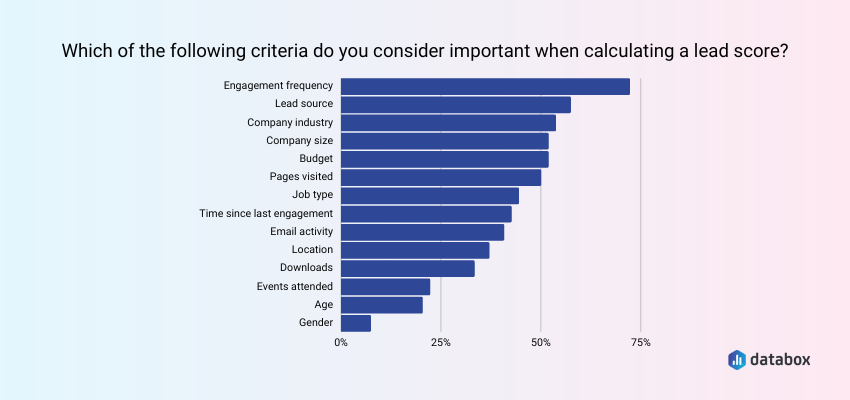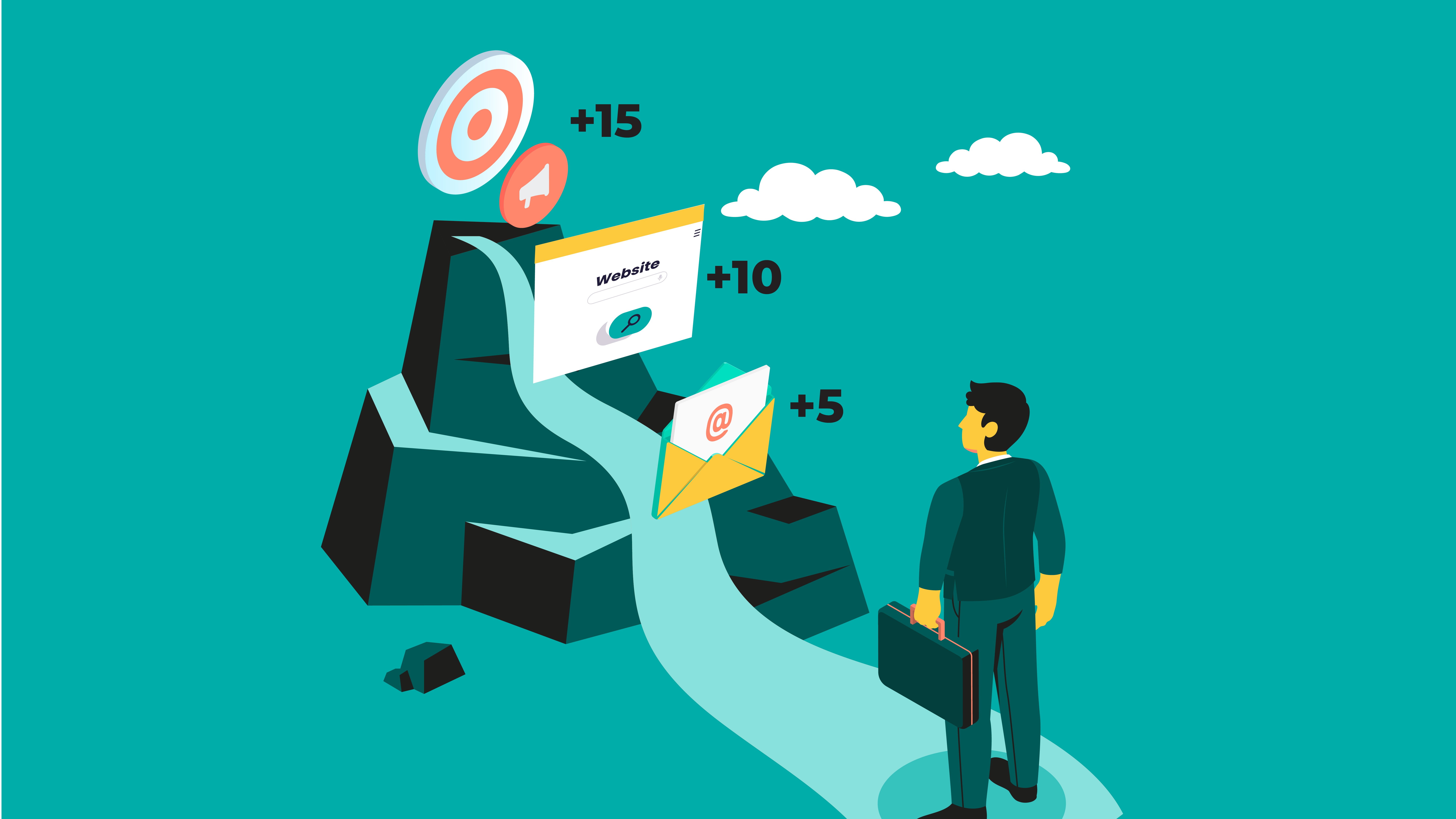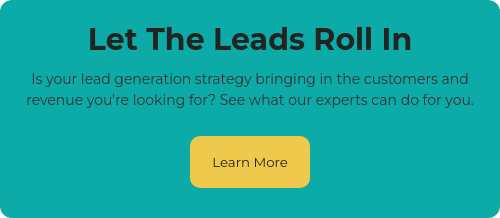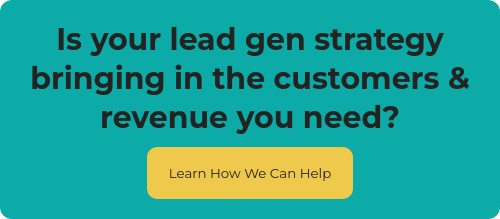You have leads pouring in and you’re meeting your goals. Everything’s looking good. Then, the sales team complains that all their leads are junk. They’re spending time reaching out to people who aren’t ready to buy.
You’ve got a problem — and lead scoring can help you prioritize who to reach out to, so you can get in front of them at the right time, close more business and generate more revenue.
We’ll explain the traditional methods for creating a lead scoring model, but also dive into how your team can leverage AI to take your lead scoring to the next level.
In This Article:
What Is Lead Scoring?
How To Calculate A Lead Score
Attributes To Consider For Lead Scoring
How To Use AI For Lead Scoring
What Is Lead Scoring?
Lead scoring is the process of assigning points to each lead your company generates in order to prioritize who your sales team reaches out to. Points are assigned based on demographic and company information, like title, company size, industry, or location, or behavioral information, such as how they engage with your marketing activities or product.
The goal behind lead scoring is to identify who is most poised to purchase your product, route them over to sales, and hopefully get them to close as quickly as possible. Because most SaaS sales cycles are fairly long, who your sales team spends time reaching out to is important. The sooner reps get in front of the people ready to buy, the sooner they will close.
Whether you use a traditional method for lead scoring or introduce AI into the process, your lead scoring model should get more sophisticated over time, leading to more efficient sales cycles, more closed won deals, and more revenue.
How To Calculate A Lead Score
Lead scoring starts with understanding what traits and behaviors your customers have in common, and then assigning each attribute a value based on the likelihood someone with that trait or who does that behavior will become a customer.
Depending on your company and target audience, lead scoring can get complicated quickly. Start with a simple model, and then introduce more complexity as you learn and deem it necessary.
Traditionally, here are the step-by-step instructions for how to calculate a lead score:
1. Calculate your overall lead-to-customer conversion rate
To get your lead-to-customer conversion rate, divide the number of customers you acquire by the number of leads you generate. Usually, you want to calculate this number over a large period of time (i.e. one year) to ensure it’s accurate and taking factors like seasonality into account.
2. Choose the attributes your ideal customers have in common
This step in the process tends to be more art than science, but the attributes you choose should be rooted in data as well as conversations with your sales team and your customers.
Talk to your sales team to understand trends they see in terms of the leads who are most likely to convert into customers, and then ask your customers about their buyer’s journey. What made them want to buy your product?
Below, we’ll explain the different attributes to consider when creating your lead scoring model.
3. Calculate the lead-to-customer conversion rate for each attribute
For each attribute you chose, divide the number of customers with that attribute by the number of leads you generated with that same attribute. This process will help you see how the close rates of each attribute compare to the overall lead-to-customer conversion rate you calculated earlier.
4. Assign points for each attribute
Compare the close rates of each attribute to your overall close rate, and take note of any attributes that have a significantly higher close rate. You’ll want to assign points to attributes that have the highest close rates because leads with those attributes are more likely to become customers. If there are attributes with close rates that are similar or lower to the overall close rate, you likely won’t want to include those in your final scoring model.
The actual points you assign to each attribute are also a bit more art than science, but the important thing is to be consistent. If your overall close rate is 1% and the close rate for leads who sign up for your free product is 15%, then you could assign that attribute 15 points because it’s 15 times higher than your benchmark.
Most SaaS companies assign 0-100 points for each lead and only route leads to the sales team when they reach a certain point threshold.
Attributes To Consider For Lead Scoring
There are two main buckets of information to consider when creating your lead scoring model: Explicit and implicit. Explicit information is provided by the lead themselves through form fills or a lead data platform like ZoomInfo or Apollo.io. Implicit information is based on the lead’s behavior.
More than half (52.17%) of the companies Databox surveyed use both explicit and implicit data when scoring leads. Using a combination of information enables you to align your model with the basic attributes that align with your ICP as well as behavioral and engagement trends that tell you way more than a title or industry ever could.
Let’s dive into what attributes most companies consider when creating their lead scoring model.
Demographic and Company Information
Demographic and company information includes basic details like title, location, industry, and annual revenue. If your product is for product managers, you would likely award points to leads who have PM-related titles. Ditto for the industries and ARR that align with your ICP.
On the flip side, if there are certain locations you can’t or don’t sell in, you could assign negative points to leads located there. Or if a lead doesn’t provide a business email, you could also assign negative points.
Marketing Engagement
From reading content to clicking an email, there are numerous ways a lead can engage with your marketing. Both the activity itself as well as the volume and frequency of engagement should be taken into account when you’re thinking about lead scoring.
For example, you could assign points to leads who visit high-intent webpages, such as your pricing page, or download a certain piece of content. You could also give more points to leads who visit more pages or visit your site more frequently. Often, companies will subtract points based on how long it’s been since a lead engaged with your site.
Other marketing activities to consider? Clicking through an email, commenting on a social post, attending an event, or engaging with an ad. Where the lead is coming from is also important. Someone signing up for a free trial is likely more ready to buy than someone watching a top-of-funnel webinar — and the points for each lead source should reflect that.
According to Databox, engagement frequency is the top criteria to consider when calculating lead scores.

Product Engagement
For SaaS companies, how leads engage with their product is key when creating a lead scoring model because certain activity can indicate someone is ready to move from a freemium product or free trial to a paid subscription.
You could assign points to leads who bump up against free product limits, consistently log in, or invite their team to join their subscription. If a lead uses certain features your most engaged users leverage all the time or completes product milestones that align with your most satisfied customers, they could be awarded more points.
Often, leads who have firsthand experience with your product are more likely to convert than leads who only engage with your marketing — and your close rates will likely also reflect this.
How To Use AI For Lead Scoring
Traditional lead scoring models require consistent analysis and optimization. For them to truly work, you can’t just set it and forget it — and that takes lots of time and effort from your marketing team.
That’s where AI comes in. Predictive lead scoring uses machine learning algorithms to sift through huge amounts of data from your CRM and marketing platforms and identify the leads who are most likely to convert. Essentially, the AI looks for trends and insights from past lead behavior to predict future lead behavior.
Your team will have to train and optimize the AI model, but eventually it will learn and adapt on its own. So, instead of your team manually analyzing and updating your lead scoring model every quarter (or even less frequently), the algorithm is constantly adapting — and serving up the best leads to your sales reps — in real time. Because SaaS products are constantly changing, predictive lead scoring also ensures any new product behavior is taken into account right away.
If you have the resources on your team, you could create your own algorithm that integrates with your existing tech stack or leverage a tool like Copy.ai.
Ready To Create Your Lead Scoring Model?
Lead scoring can be daunting, but doing it right will lead to higher close rates, more revenue, and a much happier sales team. And if you need help, we’re here for you. Check out how we can help you create an effective lead scoring model, generate high-quality leads, and close more customers.








